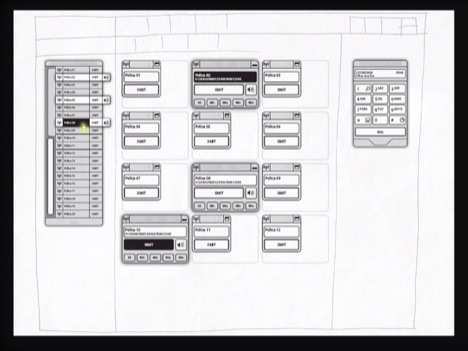![core77_design_awards_logo-BANNER.jpg]()
Over the next months we will be highlighting award-winning projects and ideas from this year's Core77 Design Awards! For full details on the project, jury commenting and more information about the awards program, go to Core77DesignAwards.com
![Chilote1.jpg]()
![Stiven-Kerestegian-webshot.jpg]() Designer: Stiven Kerestegian in co-creation with artisans in the Patagonia
Designer: Stiven Kerestegian in co-creation with artisans in the Patagonia
Location: Puerto Varas, Chile
Category: Design for Social Impact
Award: Notable
Chilote House Shoe
This simple, noble, extremely comfortable and highly sustainable indoor shoe redefines the concepts of inclusive design and conscious consumption through the synergy created by three valuable assets; design guided craftsmanship, noble renewable materials from the Patagonia, and a disruptive collaboration and manufacturing process.
From the very beginning we understood that we needed to deliver more than just a highly desirable and commercially viable product, we needed to create value for everyone involved in the products complete life cycle.
We set out to design a model that truly contributed by creating measurable positive social impact in the lives of the artisans that provide the craftsmanship, it being the soul of the product.
From this point of view, a great design would not be enough, we needed a highly innovative ecosystem around it that was not only highly inclusive socially but also completely environmentally benign. We wanted to focus on the less addressed and more challenging aspects of sustainability.
The product addresses the interest of all the individuals involved in synergy; the intended market and it's consumers, the local and global environment and all the individuals who are involved in it's manufacturing model.
![Chilote3.jpg]()
Core77: How did you learn that you had been recognized by the jury?
I learned that I had been recognized by Core77 from my colleagues from the Innovation Center of Un Techo para Chile. It's just a coincidence, but they received the same Core recognition with their "Safe Agua" project in collaboration with Art Center's Designmatters.
What's the latest news or development with your project?
The product is creating much unexpected buzz at a local level here in the south of Chile, we are contacted almost daily by artisans from all the surrounding areas wanting to participate in the production model. Same at the opposite side of our operation with our target retailers; museum stores, eco-premium boutiques and on-line sales. Quite a bit of buzz all around... things are pretty crazy right now.
Also we had an amazing launch in NYC at the NYIGF where we received several recognitions among tens of thousands of products at the show including winning the "Eco-Choice Award for most sensitive use of Material" a visitor voted award...
We have sold most of our production capacity (limited to just 1000 units per month due to our highly inclusive [far beyond fair trade] production methodology). We plan to duplicate the production in the next 6 months...
We just launched a great new website www.chiloteshoes.com: another nice upgrade is our inclusion of QR codes with each pair of Chilotes—when scanned, the code leads to a mini-site that features the personal and geographical information of the actual artisans that crafted that piece.
What is 1 quick anecdote about your project?
Interesting fact: I designed the Chilote Shoe in about 1/2 an hour (with many iterations since but the concept itself came out pretty fast). Of course, all the insights, material research, cultural learnings, etc. that came before and lead to the design was a very long process.
Everything that came after was even more laborious and challenging including the most important aspects such as the inclusive manufacturing process and especially all the social interaction elements, the relationships that are inherently developed are truly rewarding. We had to create a socially sustainable model from scratch, a model designed to meet the local socio-cultural reality and at the same time address and deliver on the global consumer trends and desires.
It's extremely difficult to think globally and act locally especially in a location so remote as the Patagonia. It is also very challenging to create a product and brand eco-system without a large company (and the associated resources) behind you. We basically started from scratch in every aspect.
It's been a long 2-3 years of work leading up to the US launch last weeks, but the actual product design was a breeze and very enjoyable.
When asked about the Chilote, I always talk more about what is around the product (it's ecosystem), the people and places and materials involved more that the product itself asI feel it speaks for itself. Sure it's cute, super comfortable and sports highly innovative materials in a functional and useful product, but I believe that the most interesting quality of the design is the "story" around it. Not to sound overly artsie but I do really think it's a conversation piece!
Read on for full details on the project and jury comments.
![Martina.jpg]()
![Chilote4.jpg]()
![Odete.jpg]()
![Sandra-&-Mali.jpg]()
![Chilote-Shoe-process.jpg]()
(more...)
![]()
![]()
![]()
























 5-6AM: A deconstructed mirrored silhouette of Ernesto—his own stalker after all—lies upon the floor with large parts missing. Nearby a restart button, photographed by John Short in the picture above, is close at hand to begin the story all over again.
5-6AM: A deconstructed mirrored silhouette of Ernesto—his own stalker after all—lies upon the floor with large parts missing. Nearby a restart button, photographed by John Short in the picture above, is close at hand to begin the story all over again. 11-12AM: A responsive floor of undulating tiles that rise and sink as you walk across them creates instability to simulate the emotion of drunken walking. Inspired by Ben Kelly, interior designer, writing about Stanley Picker's cocktail strainer.
11-12AM: A responsive floor of undulating tiles that rise and sink as you walk across them creates instability to simulate the emotion of drunken walking. Inspired by Ben Kelly, interior designer, writing about Stanley Picker's cocktail strainer. 2-3PM: A collection of floating organic vessels connected by vivid yellow cables, containing and reflecting surreal light. Inspired by David Tanguay, graphic designer, writing about Stanley Picker's collection of swizzle sticks.
2-3PM: A collection of floating organic vessels connected by vivid yellow cables, containing and reflecting surreal light. Inspired by David Tanguay, graphic designer, writing about Stanley Picker's collection of swizzle sticks. 3-4PM: Lured to the keyhole the viewer is turned stalker by their own curiosity as they look in and see their back view on a CCTV monitor peering into the box. Inspired by Adrian Searle, art critic, writing about Stanley Picker's collection of envelope openers.
3-4PM: Lured to the keyhole the viewer is turned stalker by their own curiosity as they look in and see their back view on a CCTV monitor peering into the box. Inspired by Adrian Searle, art critic, writing about Stanley Picker's collection of envelope openers. 
 Designer: Anvil Studios - Treasure Hinds, Greg Janky and Nice Reusables - Chris Hotell, Marta Hotell, Gretchen Bleiler
Designer: Anvil Studios - Treasure Hinds, Greg Janky and Nice Reusables - Chris Hotell, Marta Hotell, Gretchen Bleiler



 Johannes Nagel's unusual ceramic pieces.
Johannes Nagel's unusual ceramic pieces. Max Lamb's new furniture range made from solid wooden pols.
Max Lamb's new furniture range made from solid wooden pols.

![banner_static_468x90_30k[1].jpg](http://s3files.core77.com/blog/images/2011/09/banner_static_468x90_30k%5B1%5D.jpg)






 Designer: Herman Miller Healthcare & Continuum Design Team
Designer: Herman Miller Healthcare & Continuum Design Team


 Your typical 911 dispatch center. MMMM, green MS-DOS...
Your typical 911 dispatch center. MMMM, green MS-DOS... Initial mockup by Electronic Ink designers
Initial mockup by Electronic Ink designers



 Designer: Stiven Kerestegian in co-creation with artisans in the Patagonia
Designer: Stiven Kerestegian in co-creation with artisans in the Patagonia













